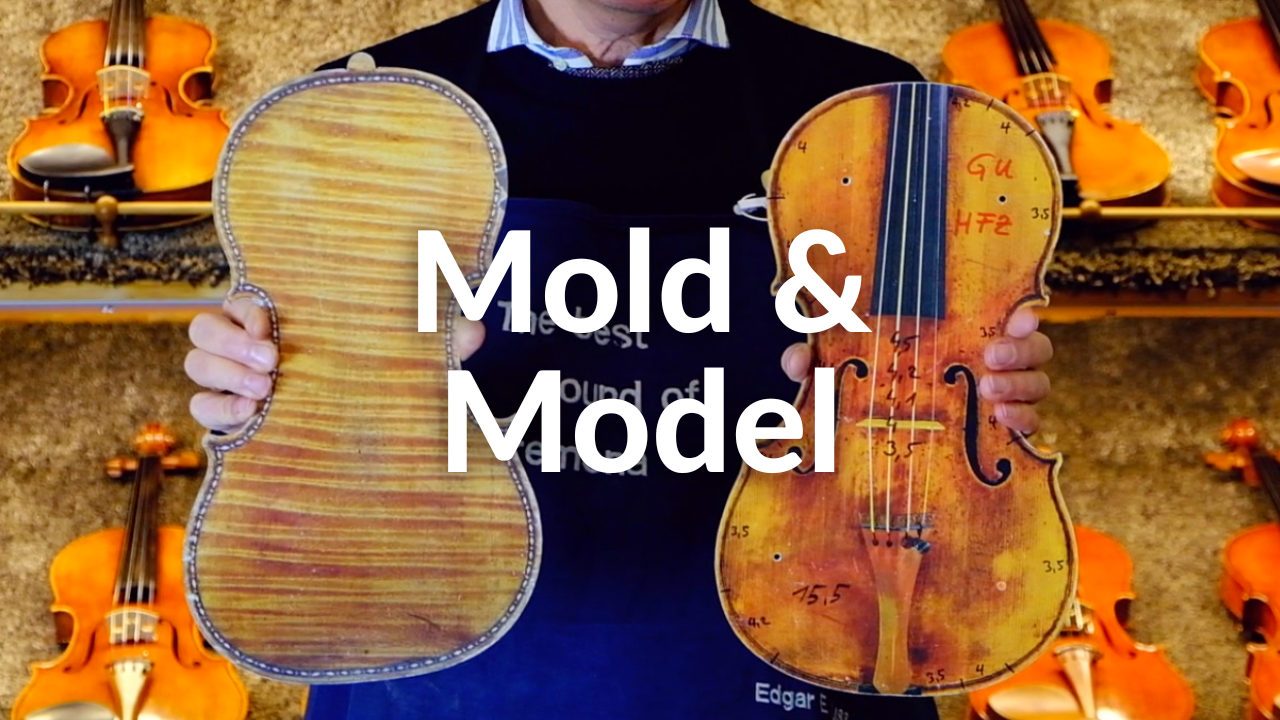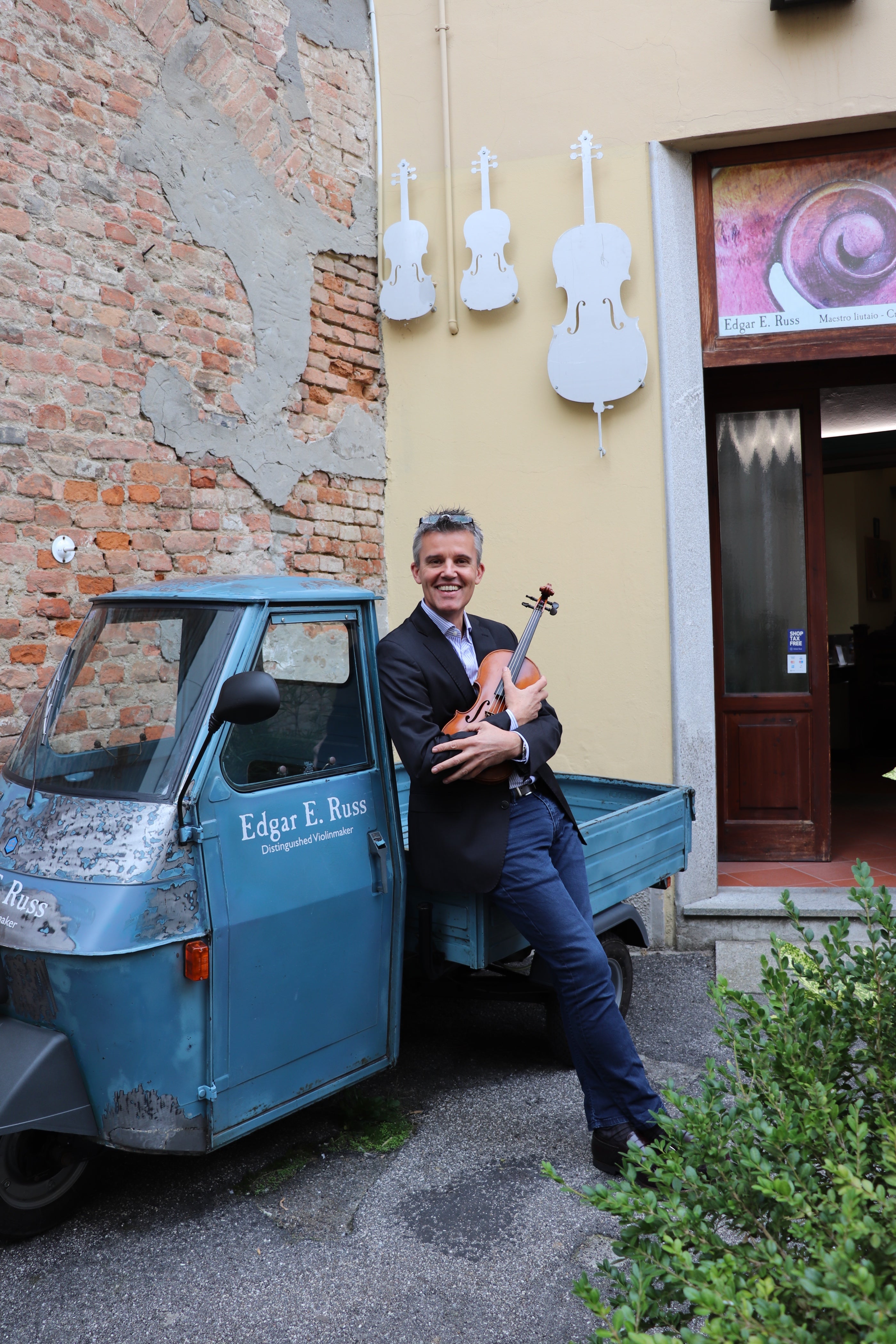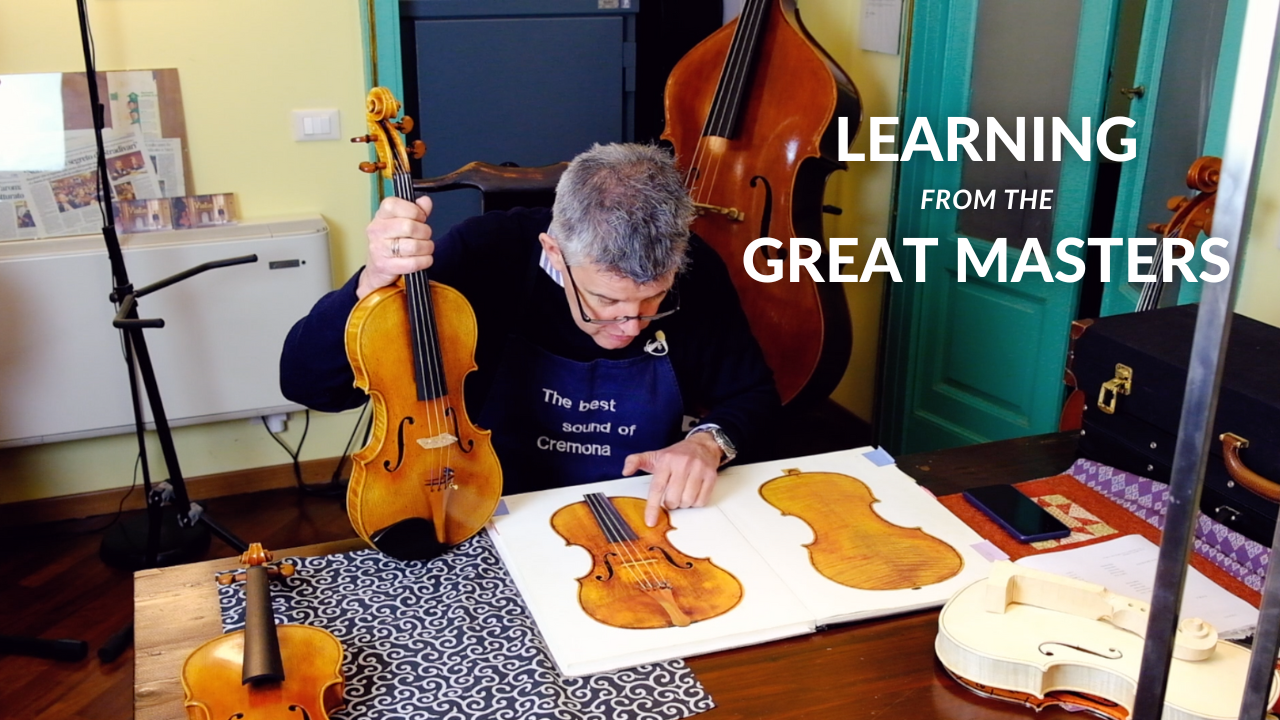
Different Models and Moulds
Hello my friends,
Today we will talk about violin models (such as Guarneri, Stradivari, Montagnana) and why violinmakers seem to always work on the same model and never creating a new one.
It is a spicy matter, because it is as if you ask me “Let me show you what you can do!”
To know more and experience the full explanation, I invite you to have a look at my video on Youtube, where I also show you examples and pictures:
You have to know, I do not use always the same model for every violin and cello that I make, that is why on my workshop's walls I have a lot of different wood molds, as you can see in this picture:

Now let me explain you what does it mean working with Guarneri or Stradivari model and how much differences there are between these two.
In my music room I have a lot of books about violins and instruments (see amatibooks.com to have a look at them). Every book is printed in very low numbers and they are very important for violinmakers as they show all the details of violins and are crucial to get the idea of what the instrument looks like in real life.
Most of these books they have photos of different models and probably the most popular is the Stradivari one:

Before Stradivari there was Amati, who was the master. In the way, the shape had a certain evolution: first with the Amati it was more round and “happy looking”; with Stradivari the violin started to be more precise and measured.
Next to Stradivari there was Guarneri, and his model and style was changing over the years: at the beginning it was similar to his master Amati and at the end he developed his style of instrument that we now call Guarneri.
As you can imagine this happens with all the makers: we all are made in the same way and as humans we have this automatic process to make things efficiently and always better. As soon as you make something as your best it becomes your standard. Even in Stradivari times, he probably had certain requirements, had success and moved towards that style that granted him this success.
As you elaborate from someone else’s model you accumulate experience (after hundreds of instruments) and you automatically have certain ideas ideas about what works best and what you need to change to make your instruments better and better.
For example, when I had to create my Osmim violin, I wanted to make something outstanding, particular, new and not based on old models. It is not the first time I want to create something new, and every time violinmakers do something new they encounter troubles. Throughout this process you realize how much you base your actions on past violinmakers and also your perception of beauty is influenced by the past.
It is a very particular process that is going on.
If the violin then has some decorations (such as the Osmium violin) or you want particular characteristics of the sound then it gets even more complicated.
But lets get to the the main question here: why don’t violinmakers always create a new shape of instrument?
The competition in Cremona is very high, as soon as someone is going somewhere else and they don't compare their work with the other makers in town, they elaborate quicker their unique stye. Us from Cremona we always have a kind of shock when looking at this new style instruments, because they loose the comparison element of living and working in a city as Cemona, where violinmakers can exchange ideas and see others works
It is good on one side but on the other side is problematic because we have a very small margin to change characteristics to the instruments.
Let me explain.
Lets take the Hellier as an example and we can call it the most beautiful Stradivari ever made:
Let's compare it now to the Heifetz by Guarneri:
I doubt you can see the differences in one glance. But as soon as I tell you where to look then you see the differences! Pay attention to the C bouts and he Waist of the violin: the are completely differente! In the Guarneri they are more "open" than in the Stradivari.
But when we put them together, one model on top of the other, the difference is tiny! Is not a lot, 1 or 2 millimeters maximum!
So this little difference makes a huge change in sound!
In terms of sound, the stradivari is extremely beautiful and equilibrated and the Guarneri is a very classic with a typical rough strong character.
The difference can also be seen in two different models from the same makers: let's take the Heifetz and Ysaye: the last one is narrower for example, and it is even madly the same master!
And you can play this game with all the models and the instruments that you encounter.
They all have a unique character.
These little changes mean that you have little margins to make a new model for new violinmakers.
Furthermore, people usually identify with characteristics and models, which makes it difficult to violinmakers to allow themself to create a new model or design and at the same time be able to satisfy the request of the musician.
Ultimately, creating your own model is a challenging activity because you need someone that is willing to spend on that new model and you need high experience in construction to create the perfect model that fits with the sound the client wants to create.
This is all for today!
All the best from Cremona
Edgar








Leave a comment
This site is protected by hCaptcha and the hCaptcha Privacy Policy and Terms of Service apply.